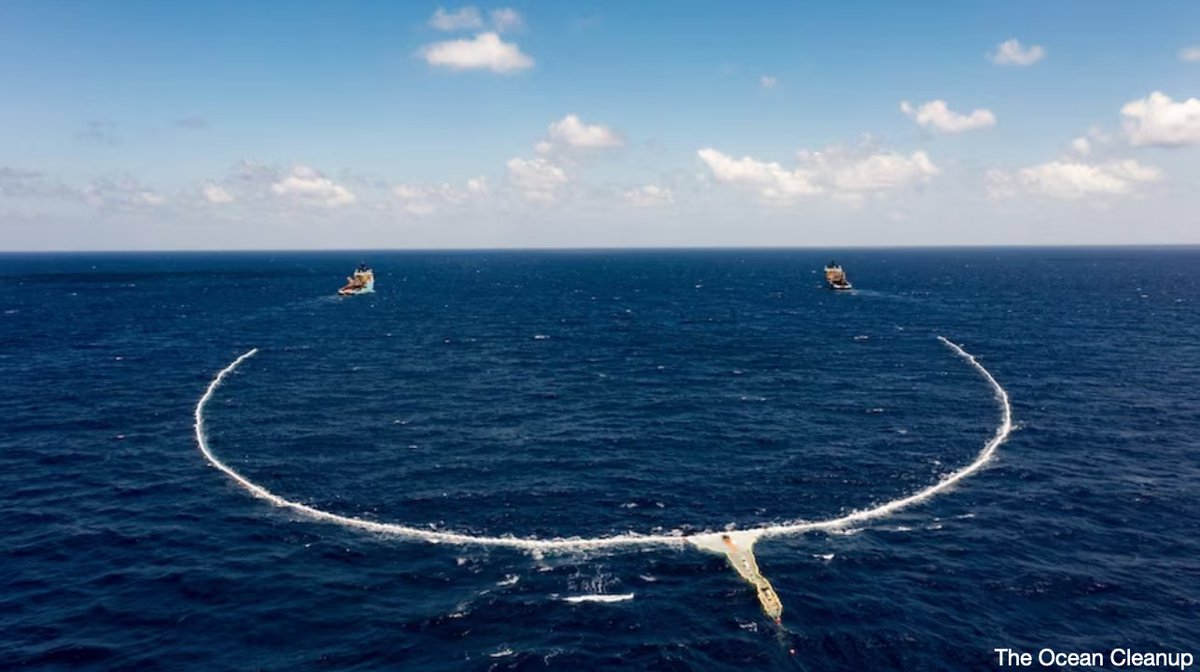What's wrong with...
High-seas plastic cleanup
Deep-sea mining
Mesopelagic fishing
High-seas geoengineering?
In our new paper, we discovered a HUGE issue at the heart of these industries. And ignoring it is a risk to all of us... [a thread 🧵]
Study: bit.ly/3p4ZgyP

High-seas plastic cleanup
Deep-sea mining
Mesopelagic fishing
High-seas geoengineering?
In our new paper, we discovered a HUGE issue at the heart of these industries. And ignoring it is a risk to all of us... [a thread 🧵]
Study: bit.ly/3p4ZgyP


@DivaAmon @ashadevos @4kgjerde @HighSeasPolicy @DrCraigMc In 2019 my colleagues and I met in Liverpool to ask a simple question: for otherworldly ecosystems, like those on the high seas, where we know almost nothing, can we estimate the risks of human activities? It seemed so simple...
(📽️surface-dwelling blue button jellies)
(📽️surface-dwelling blue button jellies)
We focused on the most accessible high seas ecosystem, the surface, and the largest novel activity impacting it: The Ocean Cleanup. We gathered everything known and used mathematical models to fill in the gaps. We discovered...
(📽️surface-dwelling blue sea dragon)
(📽️surface-dwelling blue sea dragon)
That for even the most accessible high seas ecosystem, even for an activity that claims to do good...using ALL the best available science....we are in the dark. Not even a cleanup company on the high seas can promise they won't significantly harm the environment... 

Even this 'positive environmental activity' could crash surface species populations. No company, operating in such unknown regions, can promise otherwise...
[an image of The Ocean Cleanup net, and a field of by-the-wind-sailor jellies, which float at the surface]

[an image of The Ocean Cleanup net, and a field of by-the-wind-sailor jellies, which float at the surface]


There literally isn't enough science. It's like stepping on a foreign planet, an alien forest, and estimating the impact human industry will have. We're in a catastrophic knowledge deficit. But why should we care?...
[📽️ surface-dwelling Portuguese man-o-war]
[📽️ surface-dwelling Portuguese man-o-war]
These ecosystems are all the way out at sea, right? We next preformed a stakeholder analysis and discovered connections between the high seas ocean surface and our everyday lives. Sure, this ecosystem is far away, but...
The ocean surface ecosystem is a nursery ground for commercially important fish, habitat for diverse species, feeding ground for turtles and sea birds... 

And the legal framework to stop harmful activities just isn't there. The Dutch Government only requires that The Ocean Cleanup perform one environmental impact assessment once it's fully operational. Our data show impacts will only be obvious AFTER MONTHS TO YEARS... 

Worse still, the new high seas treaty also falls short. All actors on the high seas will need to submit environmental impact information, but their countries of origin ultimately decide if they get to continue an activity, and not all countries play fair on the high seas....
Now, I'm not as worried as I used to be about The Ocean Cleanup's threat to marine life, because they've largely failed at their goals, but...
abc.net.au/news/science/2…
abc.net.au/news/science/2…
High-seas ecologists, reporters, and enthusiasts who care about the environment must speak up when poorly known ecosystems are at risk. And most important of all: we must learn more, and we must start NOW... 





From deep-sea mining to mesopelagic fishing to geoengineering, and even well-meaning efforts like plastic cleanup, the high seas is closer than it's ever been. But... 



....for most people, the high seas is out of sight and out of mind. Only more funding, for science and discovery, can help close these gaps, and help us protect this hidden half of Earth.
(📸@InsideNatGeo)
(📸@InsideNatGeo)

To learn more, check out our press release:
phys.org/news/2023-04-i…
Or read our paper:
peerj.com/articles/15021/
[end of 🧵]
phys.org/news/2023-04-i…
Or read our paper:
peerj.com/articles/15021/
[end of 🧵]
https://twitter.com/RebeccaRHelm/status/1653861661118218247
• • •
Missing some Tweet in this thread? You can try to
force a refresh

















